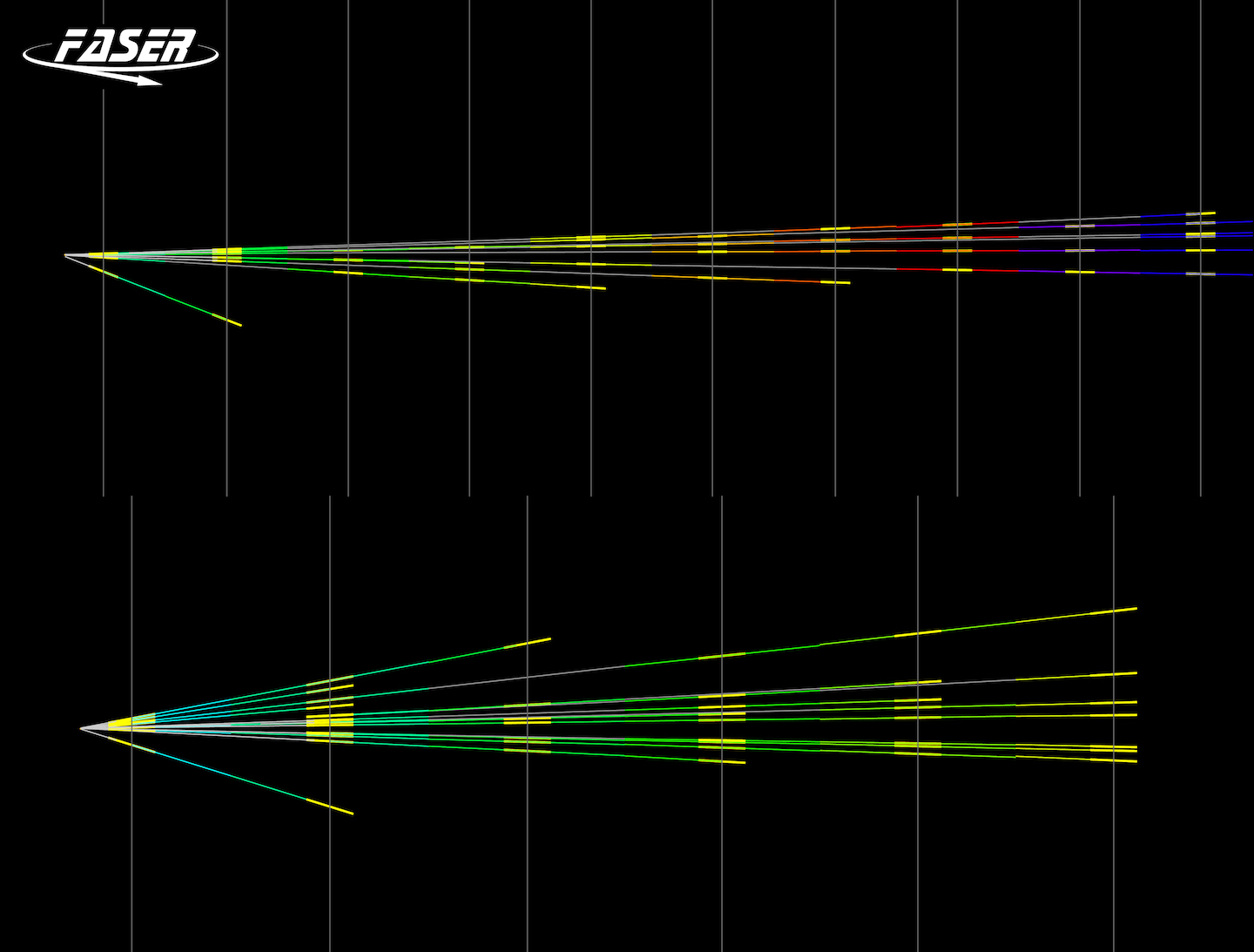It's a first at the Large Hadron Collider (LHC), or indeed at any particle collider: the FASER collaboration has detected the first candidate particle interactions for neutrinos produced in LHC collisions. The result, described in a paper posted online, paves the way for studies of high-energy neutrinos at current and future colliders.
Neutrinos are the most abundant fundamental particles that have mass in the universe, and they have been detected from many sources. Yet, no neutrino produced at a particle collider has ever been directly detected, even though colliders produce them in abundance. Studying such collider neutrinos could shed new light on the still enigmatic nature of these fundamental particles, not least because collider neutrinos are produced at high energies, at which their weak interactions with matter have been little studied.
The FASER experiment's FASERν detector and the newly approved SND@LHC detector have both been designed to catch and study collider neutrinos, and they are expected to be installed at the LHC over the course of 2021 and to begin taking data when the collider starts up again in 2022. However, the FASER collaboration was in for an early treat when it took four weeks' worth of proton-proton collision data with a smaller pilot version of FASERν shortly before the LHC was shut down for maintenance and upgrades at the end of 2018.
After analysing the pilot detector data and estimating a background of particle events that could mimic the signal from neutrino interactions, the FASER team found several candidate events for collider neutrinos. The result has a statistical significance of 2.7 standard deviations, a little below the 3 standard deviations required to claim evidence of a particle or process in particle physics.
"The goal of the pilot detector was to demonstrate the feasibility of neutrino measurements in the experimental environment of the LHC," says FASER co-spokesperson Jamie Boyd. "So we are very excited that this small detector, which is only about 1% of the final detector, allowed us to see the first candidate events for neutrino interactions at a collider."
The team expects to observe about 20 000 collider neutrino interactions with the full-fledged FASERν detector in the next LHC run, from 2022 to 2024.








